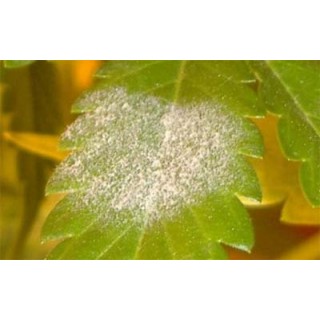Temperature and Humidity
HUMIDITY
humidity n. Dampness, especially of the air. Relative humidity; Humidity is a measure of the amount of water vapour contained within the air which is usually expressed as percentage humidity.
Humidity is a very important environmental element that must be controlled for healthy plants, and connoisseur grade meds. Humidity controls the rate of transpiration and how the nutrients are received by the plant. Just as with humans, if the humidity gets too low, our skin can become dry and flaky. We transpire by sweating more fluids out in lower humidity levels. The humidity level is like a pressure cap on the plant, keeping the moisture in the plant, allowing it to have proper transpiration rates of the fluids. Ideal humidity levels in a grow room range between 50% to 70% in vegetative growth, and 50% to 60% for flowering plants.
When humidity levels drop too low, the plants transpire at a rate much quicker than that of nutrient uptake. The nutrients or minerals do not transpire thru the plant, only the water does. So this leaves behind a concentrated level of nutrients in the plant that will actually cause a nutrient burn. Most people don’t realize in situations like these that the humidity could be responsible; usually thinking that it is too many nutrients in the reservoir. Just as a lack of CO2 can cause a plant to go dormant, low humidity can cause a plant to have nutrient problems, resulting from the transpiration rate being much too high in low humidity level environments.
Conversely, when humidity levels get too high, moisture is building up on the plants and walls, forming whole colonies of molds, fungi, and mildews. Even if you had none of these developing before the high levels, the moisture would create the perfect environment for all of these to start developing, in a very short amount of time. These pathogens will destroy your garden if not taken care of immediately. This is one more reason why a controlled, closed loop, sealed room is the best way to build and run a grow room, as you can control every element of the environment with the right equipment.
Condition and Control
- Problem/High Humidity – Dehumidifier(s)/condensors, supplemental fans, more frequent air exchange cycles (if open loop),
- Low Humidity – Humidifier, Evaporation pads,
- Temperature and Humidity in the Grow Room By Dr Lynette Morgan
- Temperature and humidity are two environmental factors which affect the rate of plant growth, development and yield potential of any crop. Often, in a protected cropping situation, we carefully adjust temperature and supply heating or cooling, but humidity gets overlooked, and it is actually the combination of the two that needs to be taken into consideration.
Temperature
The biochemical functions in plants that are required for growth and survival are `temperature dependant’ – that is there is an optimal temperature range within which a particular plant species will be carrying out photosynthesis at its maximum rate (given that sufficient CO2, water and light are also present). Outside this range, photosynthesis and other plant processes begin to slow down, to the point where they stop and growth ceases. Within a grow room, where control of all plant growth factors – light, temperature, CO2, water and nutrition, is possible, the objective is to provide a temperature range that will maximise plant growth, rather than restrict it. Since different plant species have different ideal temperature ranges, this needs to be matched to the crop being produced. Cool season crops such as lettuce, many herbs and salad greens etc have an optimum temperature range of approx 16 – 22 C. Warmer season crops such as tomatoes, capsicum, cucumbers have a higher range of 18 – 28 C.
Outside these ranges, plant growth slows due to either conditions being to cold and slowing chemical reactions inside plant cells, or becoming to hot, which denatures enzymes and causes cell death. What needs to be taken into consideration when trying to decide on an optimum temperature for plant growth, is the levels of CO2 and light which are being provided. A plant which is in a CO2 enriched atmosphere (1000 – 1500ppm), being supplied with high light levels has a higher temperature optima (at the higher end of the temperature range given) than one which is grown under standard, lower light conditions. For this reason it is possible to `accelerate’ plant growth by preventing any environmental factor (CO2 ,light, temperature, water) from becoming the ` limiting factor’ in plant growth. When high levels of light, CO2 and optimum temperature are provided, the limiting factor in plant growth becomes the speed at which the biochemcial reactions such as photosynthesis can be carried out within the plants tissues -and this is the ideal situation for a grower to achieve, since growth rates will be maximised.
These temperature ranges for ‘cool’ and ‘warm’ crops are what should be provided during the ‘light’ hours right throughout the plant’s life cycle. Night temperatures should always be run a few degrees cooler than the ‘day temperature’ provided for plants and this is usually easier to achieve when heat producing sources such as lights are switched off. There is much scientific evidence to suggest that the growth of most plants is improved when temperatures are higher during the light period than during the dark period.
Temperature Control
In the grow room, lighting is a major source of heat build up, and often removal of excess heat becomes more important than warming the environment. At night however, with the lighting switched off, the environment can cool rapidly, so in order to prevent thermal shock to the plants, heating needs to be run at night to maintain sufficient temperatures in many situations.
There are two types of environment that might be maintained in a grow room. Firstly there is the closed cycle or closed loop environment, where no air is introduced from outside. Here, CO2 is replenished artificially, temperature is controlled via heating or cooling units, water is removed or added to the air to control humidity levels and the air is thus constantly recycled for use. The second type is where warm humid air is regularly vented outside the grow room, and fresh air introduced on a regular basis.
The closed loop system, can be difficult to adequately control and requires the use of more equipment and hence a greater cost. However, in some environments, bringing in fresh air from outside can have major problems where the outside environment is excessively, hot, humid or cold – requiring it to be temperature adjusted before entering the room and well mixed by circulation fans.
Humidity
Humidity is a measure of the amount of water vapour contained within the air which is usually expressed as percentage humidity. A low percentage humidity indicates a dry atmosphere with little water vapour in the air- this can dry plants and causes rapid water loss from plant tissue. On the other hand, a high humidity indicates a greater amount of water vapour in the air with 100% humidity resulting in precipitation of water. High humidity levels also causes problems for plants, since plants need to lose water vapour from leaf surfaces during photosynthesis and transpiration (essential plant processes). High humidity levels favour the development of a huge range of fungal and bacterial pathogens so maintaining correct levels becomes even more important. Reduction of high humidity levels is best achieved by venting out the warm humid air and introducing cooler, drier air from outside the grow room – this works well in most situations, however if the outside air is also too warm and humid, then bringing this in will not help. One effective way of removing moisture from the air and lowering humidity levels is with a condenser unit – a metal plate which is colder than the surrounding air will cause water to condense on the surface. This removal of water from the air via condensation lowers the humidity.
Temperature and Humidity
The interaction of temperature and humidity in the grow room is fairly simple – the warmer the temperature, the more water is lost from the plants. This water from plant transpiration rapidly increases the humidity in the air surrounding the crop to fairly high levels. If this humidity continues to rise and stay at high levels it limits the amount of water that can be lost from plant tissue, slowing photosynthesis encouraging fungal pathogens to take hold and sometimes causing other ‘odd symptoms’. Plant ‘oedema’ is one such symptom which is essentially an accumulation of water in the plant tissue (making it look pale and puffy), this condition indicates that conditions are too humid and warm for plant biochemical processes to be carried out correctly and needs to be avoided. Since plants are so efficient at increasing the humidity of the environment through transpiration, the amount of air change with the outside environment becomes an important factor for crop production. If we look at a similar situation in a greenhouse – where plants are rapidly transpiring, the current recommendation is for 60 air changes per hour to occur with the outside environment. This means the entire volume of the greenhouse is vented out and replaced 60 times per hour – and this is what is required in a mature crop to replenish the CO2, adjust the temperature, and vent out humid air to maintain a good level of plant growth. A grow room has a similar requirement – the lighting adds to the heat load in the small area (where plants are often densely planted), the plants rapidly increase the humidity in the air and CO2 depletion can occur when light levels are high.
Therefore the air in the room needs to be vented out and replaced rapidly. When the plants are small, the plant to air volume is large (there is plenty of air and few plants), and less air replacement is required per unit of time. However by the time the plants are mature and considerably larger, the plant to air volume is small and many more air changes per hour are required to move excess heat/humidty and replenish CO2. This plant to air volume ratio is a vital consideration when a grow rooms ventilation system is designed to ensure sufficient air changes per hour can occur at all stages of crop development.
Air changes are more important during the day – due to the heat build up from lighting equipment, but are also still required at night when humidity levels can still build due to water loss from the plants. Since the environment is often heated at night, some heat will be lost due to having to vent the grow room, but introducing fresh air is important at night since plants require oxygen for respiration and removal of excess humidity.
By keeping a close eye on the appearance of the plants, problems with temperature and humidity soon make themselves obvious Plants that are wilting or have oedema and are pale and ‘puffy’ may be too warm/humid. Dry scorched patches on the leaf tips are an indication of low humidity. As with all other plant growth factors, measurement of temperature and humidity levels in the plant’s environment is the best way to monitoring what is going on in the grow room and allowing the necessary adjustments to be made.
Related post (0)
Basic Growing Tips
Discretion is key. Holster your ego and keep your grow to yourself! Keep your grow room clean. From top to bottom and every..
Growroom Construction
What size should my growroom be?Open Loop vs Closed Loop Grow.Soil, Hydro, Aero, or Fog?Ventilation & Air Conditioning.Light..
The Growing Process
TO SEED OR NOT TO SEED?To seed or to clone isn’t always the easiest decision. A clone is a genetic identical of its mother while..
Growroom Pests - Spider Mites
IDENTIFICATION Spider mites are the 8-legged bane of marijuana growers. Mites are not insect..
Temperature and Humidity
HUMIDITYhumidity n. Dampness, especially of the air. Relative humidity; Humidity is a measure of the amount of water vapour cont..
Phenotypes
PHENOTYPES: phenotypes are characteristics plants will have. IE/ you have 2 plants one is indica(a) one is sativa(b), if you bre..
Growroom Problems - Mildew
SporesHow do I Recognize, Control, and Prevent Powdery Mildew?IntroductionPowdery mildew is a common fungal disease that can ser..
Second Location Now Open West Colorado Springs!
We are excited to announce Healing Canna has opened a new medical marijuana dispensary location at 22 South Chestnut St., Unit B..





